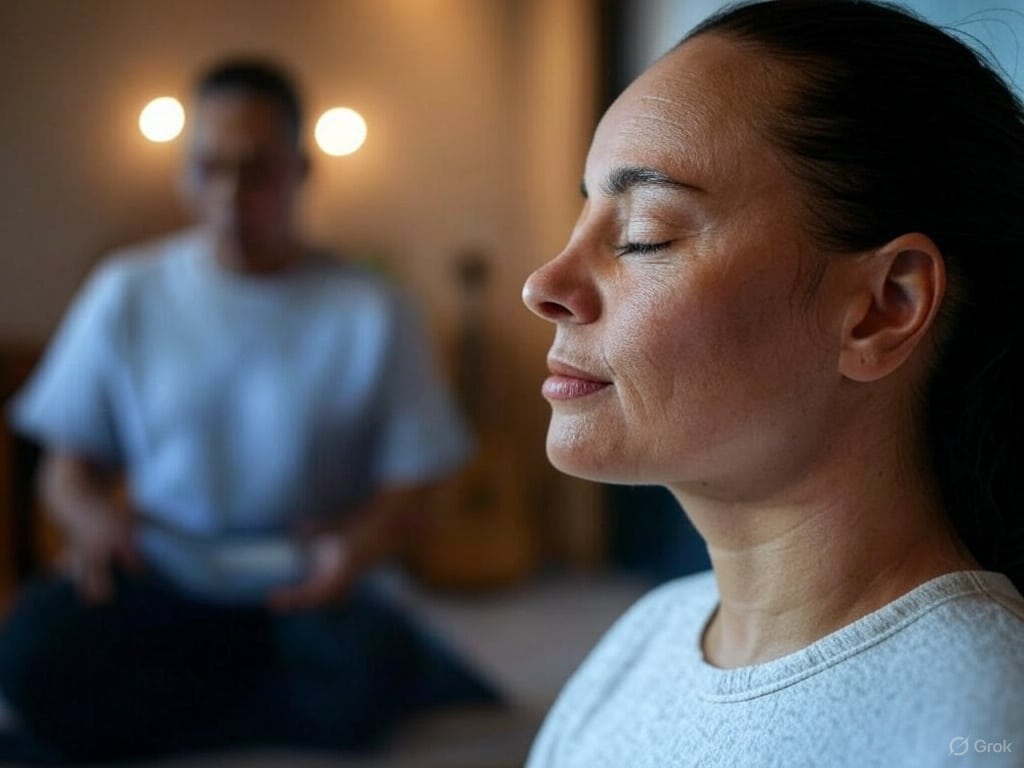Sound healing has gained popularity in recent years as a holistic approach to wellness, with practitioners and spiritual healers claiming it can reduce stress, balance energy, and even alleviate physical ailments. From Tibetan singing bowls to modern sound baths, this practice uses vibrations and frequencies to promote relaxation and healing. But does it actually work, or is it just another wellness trend? This article dives into the evidence, mechanisms, and personal experiences surrounding sound healing to provide a balanced perspective.
What Is Sound Healing?
Sound healing is an ancient practice rooted in various cultural traditions, including those of Indigenous peoples, Tibetan monks, and Indian yogis. It involves the use of sound—through instruments like gongs, tuning forks, or the human voice—to influence the body and mind. Proponents believe that specific frequencies can resonate with our cells, tissues, and energy fields, restoring harmony where there’s imbalance. Today, it’s often marketed as a therapeutic tool for stress relief, emotional release, and even physical pain management.
The Science Behind Sound and the Body
Scientific research offers some insight into why sound might affect us. Studies show that sound waves can influence brainwave activity, shifting us into states like theta or delta, which are associated with deep relaxation and meditation. For example, a 2016 study published in the Journal of Evidence-Based Integrative Medicine found that a 60-minute sound meditation session reduced tension and anxiety in participants. Additionally, the vibrations from sound can stimulate the vagus nerve, part of the parasympathetic nervous system, promoting a “rest and digest” response. While these findings are promising, they’re often small-scale and preliminary, leaving room for skepticism.
Claims vs. Evidence: What Can Sound Healing Really Do?
Advocates of sound healing often tout benefits like improved sleep, reduced chronic pain, and emotional healing. Some even suggest it can “realign” the body’s energy or chakras. However, hard evidence for these bolder claims is scarce. A 2017 review in Complementary Therapies in Medicine noted that while sound-based interventions showed potential for reducing stress and improving mood, there’s little proof they directly treat physical conditions like arthritis or migraines. The placebo effect may also play a role—believing in the process could amplify its perceived benefits.
Personal Experiences and Anecdotal Support
Beyond the lab, countless individuals swear by sound healing’s effects. Participants in sound baths often report feeling lighter, more centered, or emotionally unblocked after a session. For instance, a yoga instructor I spoke with described a gong bath as “like someone hit reset on my nervous system.” These subjective accounts can’t be dismissed outright—personal perception of well-being matters. Yet, without consistent scientific backing, it’s hard to separate genuine physiological change from the power of relaxation and expectation.
Limitations and Criticisms
Critics argue that sound healing lacks rigorous, large-scale studies to validate its broader claims. The field also suffers from a lack of standardization—holistic practitioners vary widely in training and methods, making it tough to assess efficacy uniformly. Skeptics point out that any benefits might simply stem from lying down in a quiet room for an hour, rather than the sound itself. Additionally, extravagant claims (like curing cancer or “rewiring DNA”) raise red flags and risk overshadowing any legitimate potential.
So, Does It Work?
The answer depends on what “work” means to you. If you’re seeking a scientifically proven cure for a specific illness, sound healing falls short of that standard. But if you’re looking for a way to unwind, de-stress, or explore mindfulness, it might hold real value. The blend of limited but encouraging research, coupled with widespread anecdotal praise, suggests sound healing can be a meaningful complementary practice—though not a replacement for conventional medicine. Ultimately, its effectiveness may hinge on individual openness and intent.
This is what I can tell you from an energy channel perspective
This would be totally woowoo imaginary stuff for people who do not sense energy. I would not even believe it myself if I did this a few years ago. Now that i can see or sense what’s happening, I can see that some “energies” are being pulled out of the human body, those can be stored emotions, such as traumas or stress of your work week. It is not a miracle cure, but yes, something is happening, it’s like peeling layers of an onion. It takes time to remove everything that is stored in a human body, don’t expect to remove 10 years of stored stress within 30 minutes of sound bath session. I do use tibetan bowls to assist me in some sessions, it helps with grounding, and also unplugging the mind, because we think or listen about the sound, the monkey mind gets occupied by a pure sound, which allows a better flow of energy within the field of the person. I have been blessed to witness insane somatic reactions and instant pain relief with the use of tuning forks, shamanic chants and tibetan bowls. Some people might just say it’s placebo, i’m fine with their opinion and respect their point of view, as long as the person is pain free, whatever name you want to give to the “technology” used, we should stay open and celebrate anything that makes people feel better.
Final Thoughts: A Resonant Possibility
Sound healing occupies a gray area between science and spirituality, offering a unique sensory experience that resonates with many. While it’s not a miracle cure, its ability to foster relaxation and mental clarity shouldn’t be ignored. Whether it’s the vibrations, the ambiance, or simply the act of slowing down, sound healing seems to strike a chord for those willing to listen. If you’re curious, a session might be worth a try—just don’t expect it to rewrite your biology overnight.
